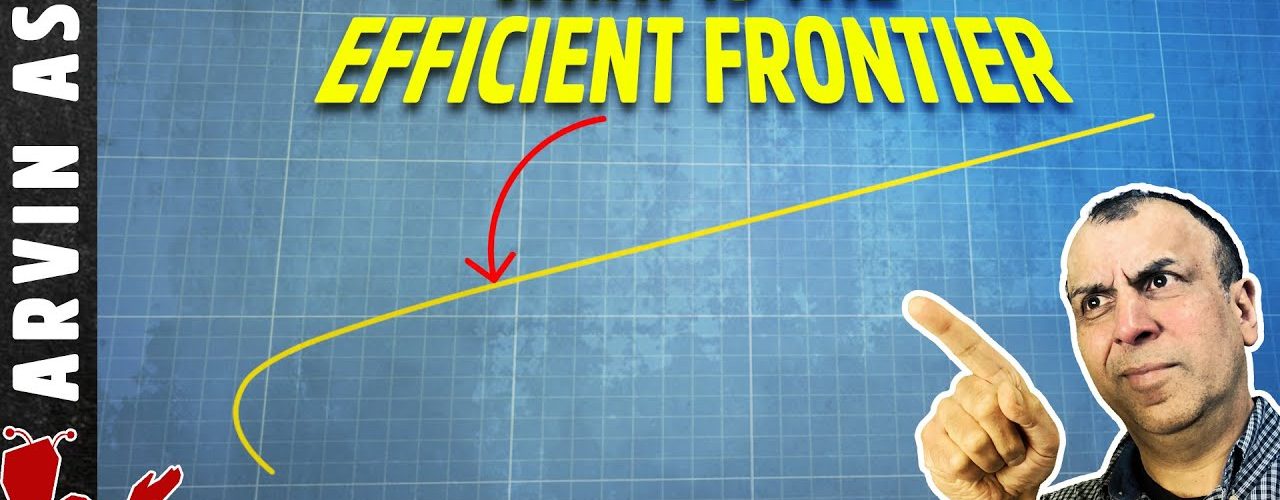What is the efficient frontier? It shows you the best portfolio mix between stocks and bonds. You are probably familiar with the phrase, “No pain, no gain” if you work out in a gym. Or the phrase, “Nothing ventured, nothing gained” when it comes to business. This basically means that you have to take some risk, to get some reward.
This is also true in investing, that risk is proportional to returns. You usually get higher returns if you are willing to take higher risk. For example, the stock market has higher returns than butting your money in treasury bonds, but it also means you take on higher risk. Or does it?
Modern portfolio theory has a way where you can have your cake and eat it too, meaning, you can get a higher return and lower your risk is certain circumstances. If you put $100 in a savings account at a bank in the united states, which essentially has no risk, because it is FDIC insured, meaning the US government guarantees that your $100 will never go down in value. The average interest you will get in it in the U.S. is 0.1%. This means that at the end of the year, your savings account will be worth $100.10.
If you put your money in the US stock market, which can have high risk, meaning it can fluctuate quite a bit, and nothing is guaranteed, at the end of the year, you could have a portfolio value of as much as $138 as would have happened in 1995, or $63 as would have happened in 2008. This fluctuation in value of principal is called risk. But on average, if you didn’t touch the money, you would have an annual return of about 7%. After an average 10 year period, your $100 would be worth $200 if invested in stocks. In the bank after 10 years, your $100 would be worth a whopping $101.05.
Where you invest depends on your tolerance for risk. If you think you would pull all your hair out watching the stock market drop the value of $100 to $63 because you needed the money for something, then the stock market is not for you, and you should park your money at the bank. But you should also then not complain about the fact that you only make $1.05 in interest over 10 years.
This is just the way life and money works. Low risk, low reward.
But not every risk level has the same reward. You can get higher rewards with the same level of risk. This is part of modern portfolio theory which was developed by a guy named Harry Markowitz in 1952. This is called the “Efficient Frontier.” And here is what that means. As I said earlier, as risk goes up, so does the return.
Let’s look at this risk/return curve. Return is measured in average percentage annual return, and risk is measured as the standard deviation from the average. The larger the standard deviation, the more volatile the portfolio.
If the highest risk portfolio would consist of 100% stocks as in an S&P 500 index fund, then as bonds are added to this portfolio, in this case 10 year U.S. Treasury bonds, which have very little risk, the risk starts to come down, as you would expect, until it reaches a low point. The line representing the highest return you can get at any specific risk is called the “efficient frontier”
But, surprisingly this line has an inflection point, as more and more bonds are added, it curves backwards, meaning it has higher risk with a lower return when the bond percentage of the portfolio goes above a certain point, and continues up to 100% bonds. This means that, in fact, having a modest percentage of stocks actually REDUCES the risk verses an all-bond portfolio.So it turns out that even though bonds are lower risk than stocks, a 100% bond portfolio is NOT the lowest risk portfolio. The inflection point is actually the lowest risk portfolio. So where does this inflection point occur – at a portfolio mix of about 20% stocks and 80% bonds.
And in fact, even a 25/75 mix of stocks and bonds has a slightly lower risk than a 100% bond portfolio. So you should definitely keep this in mind, when you are making your investment decision.
Why do investments behave this way? Because of the slight inverse relationship of bonds vs. stocks. In other words, stocks can go up in value when bonds go down, so they provide a diversification effect which actually reduces the risk of an all-bond portfolio. As I said in an earlier video – diversification is the key to lowering risk. Your mother was right – never put all your eggs in one basket.







